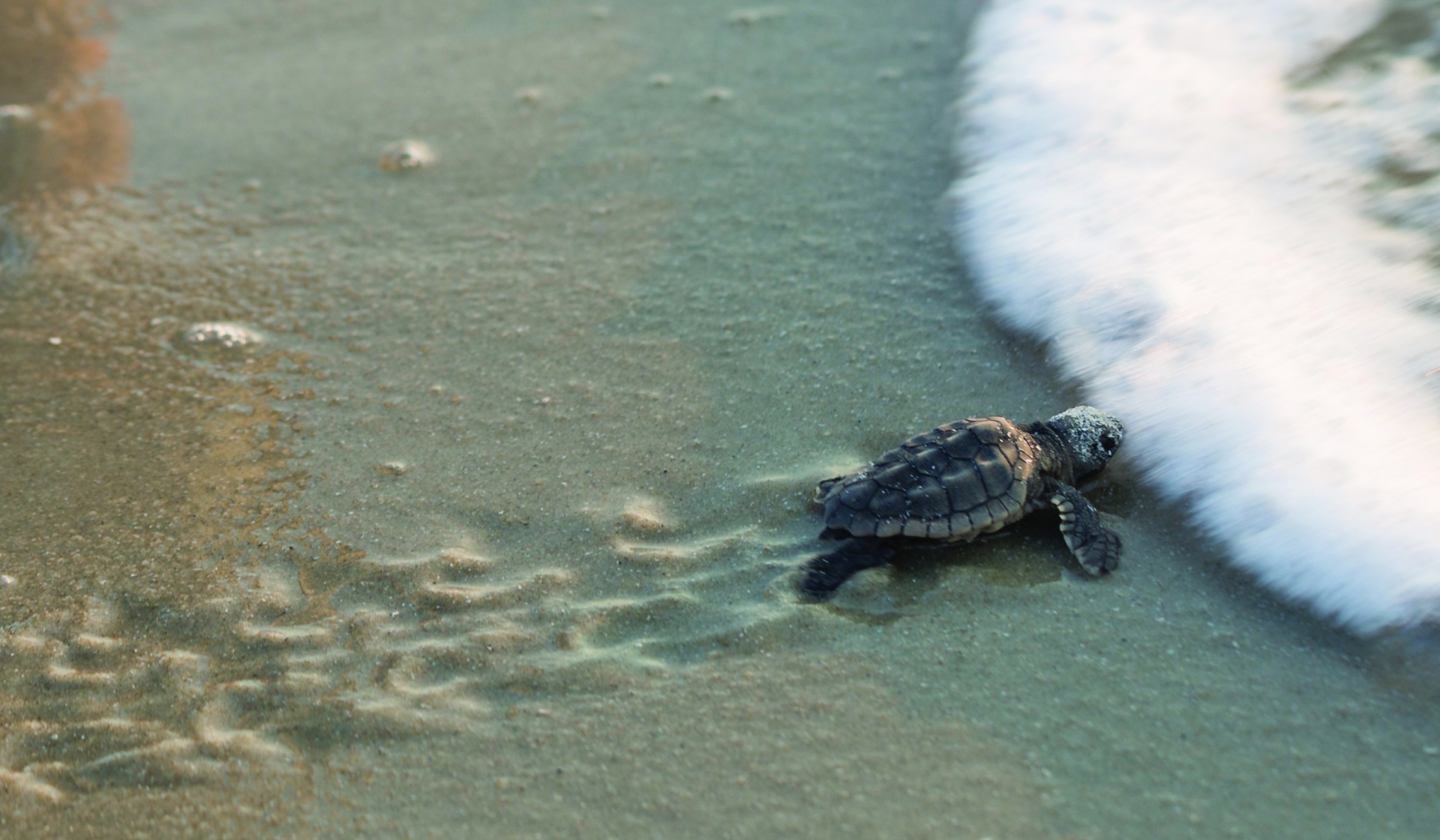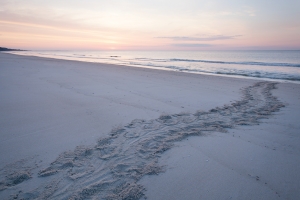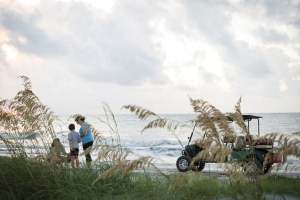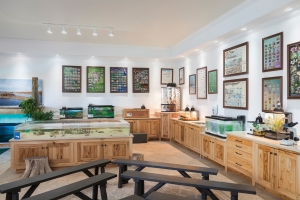Turtle Time
Sea turtles capture imaginations and inspire conservation efforts.
Sea turtles are captivating. Weighing up to 2,000 pounds, they glide slowly and gracefully through the waters or bob near the surface, feeding. They share with us a long lifespan as well as a desire to travel, migrating thousands of miles the world over. Wherever their journeys take them, when it’s time to lay their eggs, they head back to where they themselves were born, decades earlier.
STATESIDE SEA TURTLES
Unlike tortoises or freshwater turtles, sea turtles cannot retract their head or flippers into their shells. As reptiles, they breathe air, but spend most of their lives in water, mainly coming ashore to nest. Six of the world’s seven sea turtle species are found in U.S. waters: loggerhead, hawksbill, green, leatherback, Kemp’s ridley and olive ridley. Leatherbacks are the largest, weighing up to 2,000 pounds and measuring up to 6 feet in length. All six are protected under the Endangered Species Act, and with advancements in fishing technology and conservation efforts, their numbers are improving. The seventh species, the flatback sea turtle, lives almost exclusively in the sandy beaches and shallow coastal waters of Australia and Papua New Guinea.
LOGGING LOGGERHEADS
Five U.S. turtle species can be found along Georgia’s coast, but loggerhead sea turtles most frequently nest along the Golden Isles each summer. Weighing 200 to 350 pounds and measuring 2.5 to 3.5 feet, loggerhead sea turtles are named for their large heads and sport brown, reddish brown and yellow coloring. Loggerhead sea turtles can live 70 years or more and, since the early 1990s, their population has continued to rise.
Like humans, loggerhead sea turtles go through various stages of development over their long lives. Youngsters spend their first seven to 15 years in the open ocean, before migrating to near-shore coastal areas, where they continue to forage and grow. At around age 30, they migrate to nest in the same beaches where they themselves hatched.
A female loggerhead will mate and nest every two to three years. In the dark of night, she will slowly make her way up the beach, leaving an army crawl like-pattern in the sand. Finding a spot between the high tide line and dune front, she will use her body and all four flippers to dig as far as possible, creating an egg chamber.
From early May to early August, female loggerhead sea turtles come ashore, dig holes roughly 2 to 3 feet in depth, lay golf-ball size eggs, cover them with sand and head back to sea,” explains Sea Island Lead Naturalist Haley Watkins.
During this nesting season, each female will lay three to five nests about two weeks apart. In 2022, Georgia broke nesting records with over 4,000 nests. Each nest will hold around 100 to 150 eggs. Interestingly, the temperature of the sand determines the sex of the hatchlings, with cooler temperatures producing males and warmer, females. The eggs incubate in the sand for about two months before hatching.
“From early July to October, thousands of hatchlings emerge and scramble toward the ocean,” Watkins notes. “Last summer, Sea Island had a record-setting year with 144 nests and over 9,500 hatchlings!” Crawling out of the nest, these baby turtles move toward the brightest horizon, ready to begin their world voyages.
SEA TURTLE WALKS
| BY JOE RADA |
The Sea Island Nature Center offers many experiences, but its sea turtle programming is, by far, the most popular. “Throughout summer, shortly after sundown, we guide members or guests out on the beach and watch for loggerhead activity during the Sea Turtle Night Walk,” says Sea Island Lead Naturalist Haley Watkins. “A related early morning program, Sea Turtle Dawn Patrol, takes members or guests on golf carts to explore five miles of beach in search of newly laid sea turtle nests or hatchings.”
Among the educational aspects of these outings, a very important one is learning how not to disturb the endangered sea turtle species. Avoid flash photography, as it startles turtles and confuses their instinctual patterns. Only carry red-light flashlights, which are provided on Sea Island guided tours; because sea turtles are not sensitive to the color red, they are safe to use. Regular flashlights are too bright and look like the moon to sea turtles, which can lead them in the wrong direction. Don’t get too close and don’t block their way, which includes knocking down any sandcastles you build, filling in holes you dig on the beach, and removing any beach items like chairs and coolers — all of which can hinder the turtles’ journey to and from the ocean.







